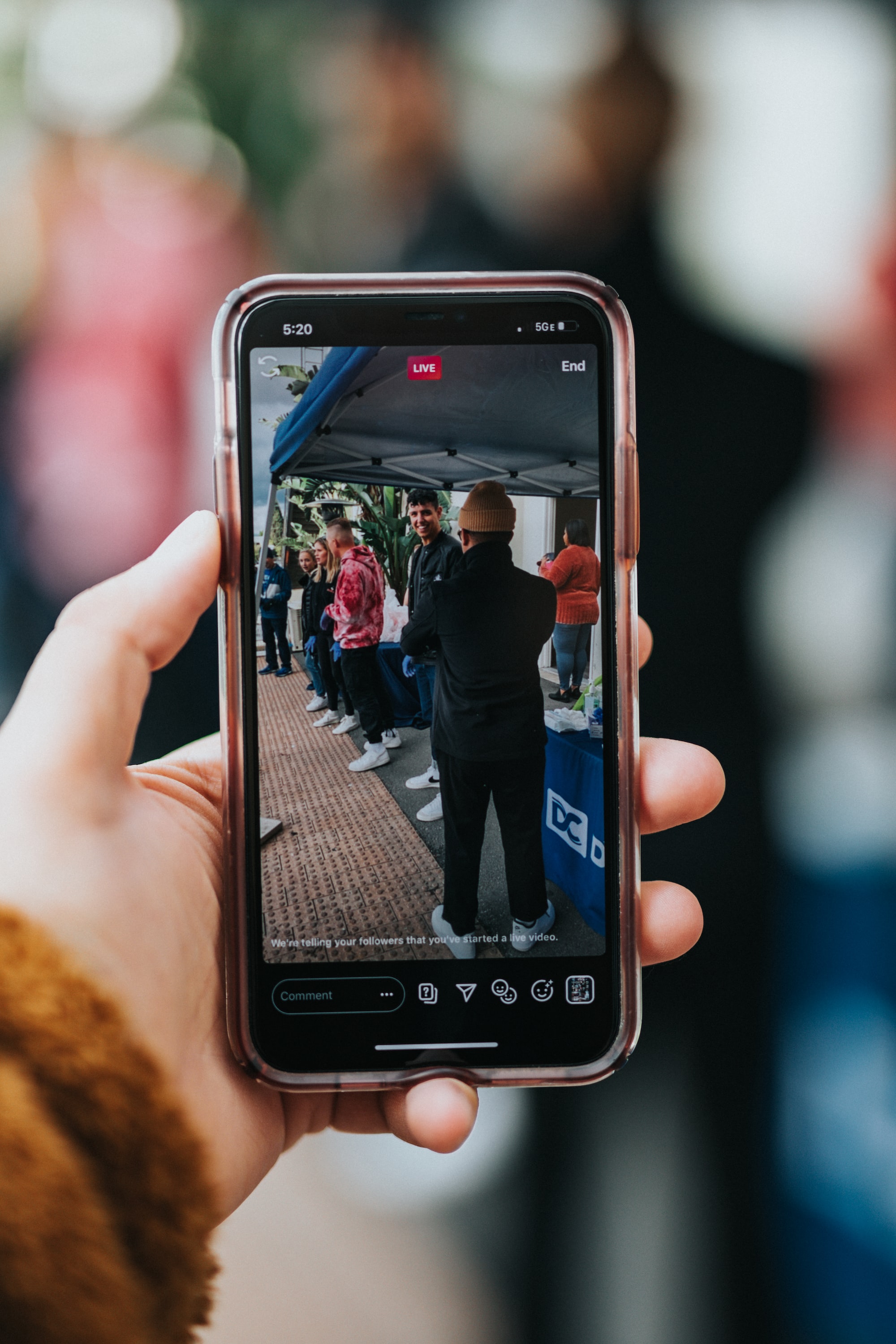User-Generated Content: Harness Authenticity to Amplify Your Brand
User-generated content (UGC) has become essential for brands looking to build trust and credibility with their audiences. By leveraging the power of UGC, businesses can create authentic and engaging marketing campaigns that resonate better with their target consumers. Let's discuss the impact of user-generated content on brand engagement, uncover tips for encouraging customers to share their experiences, and explore best practices for incorporating UGC into your marketing strategy.
Understanding the Power of User-Generated Content
User-generated content (UGC) is a critical component of content marketing and refers to any form created by users, consumers, or fans of a brand rather than by the brand itself. UGC can take many forms, including photos, videos, blog posts, testimonials, reviews, and social media posts. This type of content differs from traditional advertising in that it is more authentic, relatable, and trustworthy, as it comes directly from the experiences and perspectives of customers.
In recent years, UGC has gained significant traction as a marketing tool due to the rise of social media platforms and the growing distrust of traditional advertising among consumers. Today, more than ever, people are looking for genuine and unbiased opinions from their peers before making a purchase decision, making UGC an invaluable resource for brands looking to connect with their target audience.
The Benefits of User-Generated Content
User-generated content offers many benefits for brands, making it a powerful marketing tool worth considering. The key advantages include:
- Increased Trust: Consumers tend to trust content created by their peers more than traditional advertising, as it is perceived to be more honest and unbiased. Studies show that UGC is 2.4x more likely to be viewed as authentic than branded content.
- Enhanced Authenticity: UGC provides an unfiltered, real-life view of how customers experience and interact with a brand or product, making it more relatable and engaging than polished marketing materials.
- Cost-Effectiveness: Creating and curating user-generated content can be less expensive than producing high-quality advertising materials, allowing brands to stretch their marketing budgets further.
- Improved SEO: UGC can improve a brand's search engine optimization (SEO) by generating organic backlinks, increasing social signals, and adding fresh, relevant content to a brand's online presence.
- Higher Conversion Rates: Studies have shown that UGC can lead to higher conversion rates, as customers are more likely to make a purchase after seeing positive reviews or content from fellow consumers.

The Role of Social Media in UGC
Social media platforms play a crucial role in the world of user-generated content. These platforms provide an accessible and visible space for consumers to share their experiences, opinions, and recommendations with their networks. In turn, brands can leverage these platforms to amplify their UGC, reaching a wider audience and fostering a sense of community around their products or services.
Popular platforms such as Instagram, Facebook, Twitter, and TikTok offer unique opportunities for brands to showcase UGC creatively and engagingly. For example, Instagram's visual format makes it an ideal platform for sharing customer photos and videos. In contrast, Twitter's short-form content and real-time nature make it an excellent space for sharing customer testimonials and reviews. Brands can also utilize features like hashtags, geotags, and mentions to increase the discoverability of their UGC and encourage further engagement from their audience.
How to Encourage and Leverage Customer Stories
Identifying and Targeting Brand Advocates
To successfully leverage user-generated content, it's essential to identify and engage with customers who are already passionate about your brand and are more likely to create and share UGC. These brand advocates can become your valuable assets in promoting your products or services to a broader audience. Tips for finding and targeting brand advocates include:
- Monitoring social media platforms and online communities for mentions of your brand, products, or services. Look for users who are consistently sharing positive experiences and engaging with your content.
- Analyzing customer reviews and testimonials to find satisfied customers willing to share their experiences with others.
- Implementing a customer relationship management (CRM) system to track and analyze customer interactions and identify loyal customers who will likely become brand advocates.
- Engaging with your audience regularly, responding to comments and messages, and showing appreciation for their support. This will encourage further engagement and increase the likelihood that they will create and share UGC on your behalf.
Creating an Environment Conducive to UGC
To encourage customers to create and share user-generated content, brands have to create an environment that makes it easy and appealing for them to do so. Strategies for fostering a UGC-friendly environment include:
- Offering incentives for customers to share their experiences, such as discounts, exclusive offers, or entry into contests or giveaways.
- Designing product packaging, in-store displays, or online platforms with UGC in mind, making it simple for customers to capture and share content.
- Providing clear guidelines and prompts for customers to create UGC, such as suggesting specific hashtags or types of content they can share.
- Showcasing UGC prominently on your website, social media platforms, or marketing materials to demonstrate your appreciation for customer contributions and inspire others to participate.
Incentivizing User-Generated Content
Motivating your customers to create and share UGC can be achieved through various incentives, which can be tailored to your brand and target audience. Popular incentive options include:
- Contests and Giveaways: Launch a UGC campaign where customers are encouraged to share their experiences using a specific hashtag or tagging your brand for a chance to win prizes or exclusive offers.
- Loyalty Programs: Integrate UGC into your existing loyalty program, rewarding customers with points or exclusive benefits for sharing their experiences with your brand.
- Discounts and Special Offers: Offer customers a discount or exclusive offer in exchange for their UGC, such as providing a coupon code after they share a review or photo of your product.
- Recognition and Exposure: Showcase customer UGC on your website, social media channels, or even in your advertising campaigns, giving them recognition and exposure for their content.
By incorporating user-generated content into your marketing strategy and creating an environment that encourages and rewards customer engagement, you can harness the power of UGC to boost your brand's credibility, authenticity, and performance. With the right approach, UGC can become a valuable asset in your marketing toolkit, driving increased engagement, trust, and conversions.

Best Practices for Incorporating UGC into Your Marketing
Curating and Showcasing High-Quality UGC
To make the most of your user-generated content, it's essential to curate and showcase the highest quality and relevant pieces that align with your brand's values and messaging. Tips for curating and showcasing UGC include:
- Regularly monitor social media platforms and online communities, and review websites to identify high-quality UGC that reflects positively on your brand.
- Implementing a hashtag strategy to encourage customers to share UGC that is easy to find and collect, making it simple to curate and showcase the best content.
- Creating a dedicated section on your website or social media channels where customers can view and interact with the UGC you've curated, fostering a sense of community and inspiring others to contribute their content.
- Incorporating UGC into your marketing materials, such as email newsletters, blog posts, or even paid advertising campaigns, to leverage the power of social proof and enhance the credibility of your message.
Maintaining Legal and Ethical Considerations
When incorporating user-generated content into your marketing strategy, it's crucial to adhere to legal and ethical guidelines to protect both your brand and your customers. Some important considerations include:
- Obtain permission from content creators before using their UGC in your marketing materials or website. This can be done by contacting them directly or by including clear terms and conditions in your UGC campaigns that outline how their content may be used.
- Providing proper attribution to the content creator, including their name, username, or a link to their social media profile, to give them credit for their work.
- Respect customers' privacy and ensure you do not share sensitive or personally identifiable information without their consent.
- Avoiding the manipulation or alteration of UGC in a way that misrepresents the content creator's original intent or message, as this can damage your brand's credibility and trustworthiness.
Measuring the Impact of Your User-Generated Content Campaigns
To understand the effectiveness of your UGC campaigns and identify areas for improvement, it's essential to track and analyze key performance metrics. Important metrics to monitor include:
- Engagement: Measure the number of likes, comments, shares, and mentions generated by your UGC campaigns, and any changes in your audience engagement levels.
- Reach and Impressions: Track the number of users who have seen or interacted with your UGC and the total number of impressions your campaigns generate.
- Conversions: Analyze the impact of your UGC campaigns on your conversion rates, such as sales, sign-ups, or other desired actions.
- Return on Investment (ROI): Calculate the ROI of your UGC campaigns by comparing the costs associated with acquiring and showcasing the content against the revenue generated by increased conversions or other measurable benefits.
By tracking these metrics, you can gain valuable insights into the effectiveness of your user-generated content campaigns and make data-driven decisions to optimize your strategy for even better results.

Integrating UGC into Your Content Strategy
Balancing UGC with Branded Content
While user-generated content offers numerous benefits, balancing UGC and branded content in your content marketing strategy is important. Combining both types of content allows you to maintain control over your brand messaging while benefiting from UGC's authenticity and credibility. Tips for balancing UGC with branded content include:
- Identifying key themes and topics that resonate with your audience and align with your brand values and developing a content plan incorporating UGC and branded content around these themes.
- Ensuring your branded content complements and supports the UGC you showcase by providing additional context, insights, or expert opinions.
- Diversify your content formats and channels to create a varied and engaging mix of blog posts, videos, social media updates, and email newsletters featuring UGC and branded content.
Collaborating with Influencers and Content Creators
Another way to enhance your content marketing strategy with user-generated content is by collaborating with influencers and content creators who share your brand's values and appeal to your target audience. By partnering with these individuals, you can access high-quality UGC that aligns with your brand messaging while leveraging their existing audience and reach. Tips for successful influencer collaborations include:
- Identifying influencers and content creators whose values, style, and audience align with your brand's target market.
- Establishing clear goals and expectations for the collaboration, such as the type of content to be created, the platforms it will be shared on, and any specific messaging or call-to-actions to be included.
- Providing influencers with creative freedom to produce content that resonates with their audience, while adhering to your brand guidelines and objectives.
- Tracking the performance of your influencer collaborations and using the insights to inform future partnerships and content marketing strategies.

Adapting Your UGC Strategy for Different Platforms and Formats
Tailoring Your UGC for Different Social Media Platforms
Each social media platform offers unique opportunities and challenges when it comes to incorporating user-generated content into your marketing strategy. To maximize the impact of your UGC, it's important to tailor your approach to each platform's specific features, audience, and content formats. Some tips for adapting your UGC strategy for different social media platforms include:
- Instagram: Focus on visual storytelling through high-quality images and short videos, utilizing features like Stories, Reels, and IGTV to showcase UGC in creative and engaging ways.
- Facebook: Encourage users to share their experiences and engage with your brand through comments, reviews, and Facebook Groups, and use Facebook's ad platform to amplify your UGC reach.
- Twitter: Utilize the real-time nature of Twitter to share timely and relevant UGC, such as customer testimonials, product updates, or industry news, and engage with your audience through retweets, replies, and quote tweets.
- TikTok: Tap into the platform's viral potential by encouraging users to create short, entertaining videos featuring your products or services, and participate in popular trends and challenges.
Exploring New Content Formats and Technologies
As digital marketing continues to evolve, new content formats and technologies offer exciting opportunities for incorporating user-generated content into your marketing strategy. To stay ahead of the curve and maximize the impact of your UGC, consider exploring the following emerging formats and technologies:
- Virtual Reality (VR) and Augmented Reality (AR): Leverage these immersive technologies to showcase UGC in innovative ways, such as by creating virtual showrooms, product demos, or interactive brand experiences.
- Podcasts and Audio Content: Encourage users to share their stories and experiences through audio formats like podcasts or social audio platforms, and incorporate these customer testimonials into your own branded podcast or audio marketing materials.
- Live Streaming: Use platforms like Twitch, YouTube Live, or Facebook Live to host live events or Q&A sessions where customers can share their experiences, ask questions, and engage with your brand in real-time.
- Short-Form Video Content: Experiment with new short-form video platforms like TikTok, Instagram Reels, or YouTube Shorts to showcase user-generated content in a fast-paced, engaging format that appeals to younger audiences.
- Chatbots and Conversational Marketing: Integrate UGC into your chatbot or conversational marketing strategy by using customer testimonials, reviews, or frequently asked questions to provide personalized and relevant content to your audience.
By understanding the power of user-generated content, encouraging and leveraging customer stories, and incorporating best practices into your marketing strategy, you can harness the full potential of UGC to drive increased brand awareness, loyalty, and conversions. By balancing UGC with branded content, collaborating with influencers and content creators, and adapting your strategy for different platforms and formats, you can create a well-rounded and impactful content marketing strategy that connects with your customers on a deeper level and achieves lasting success.
